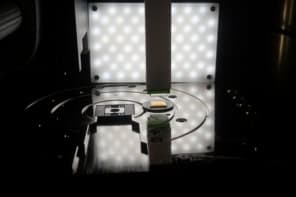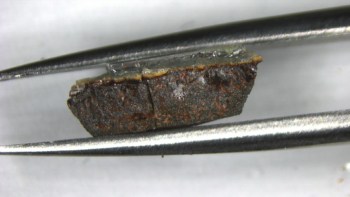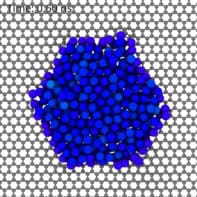
An international group of physicists has demonstrated an electron spin-splitting effect in a semiconductor that is far larger than has ever been seen before. The large Rashba effect – the phenomenon of spin splitting with an applied electric field instead of a magnetic field – could herald the room-temperature operation of spintronic devices.
Spintronics is expected to be one of the next revolutions in computing. The idea is to fabricate devices that operate using not just an electron’s charge, but also its spin. Because the spin of an electron can be switched more quickly than charge can be moved round, these spintronic devices should operate faster and at lower temperatures than their electronic counterparts.
Electron spins are tiny magnetic moments, so to manipulate them a magnetic field is needed. As magnetic fields are difficult to control on the small scales typical in computing, physicists tend to exploit the so-called spin–orbit interaction. In this phenomenon, an electron moving in an electric field “sees” a magnetic field, which interacts with the electron’s spin.
Towards a room-temperature Rashba effect
In an external electric field, this leads to the so-called Rashba effect – a splitting of the spin-up and spin-down states in energy and momentum that is crucial for proposed spintronic devices. In the design for spin transistors, for example, electrons of a single spin are injected and then – under an applied electric field – have their spins rotated. But the Rashba effect in well-established semiconductors, such as silicon and gallium arsenide, is so small that electrons have to travel large distances – perhaps several microns – before any spin rotation is noticeable. Such distances require ultrapure materials and low temperatures to ensure that the electrons are not knocked off course.
Now, Phil King and colleagues at the University of St Andrews in the UK, together with other researchers in Europe and China, have come up with a material that could make the Rashba effect, and spintronics in general, feasible at room temperature. Bismuth selenide – the researchers’ material of choice – is unusual in that its inner bulk structure behaves as a semiconductor while its surface behaves as a metal. Such materials, known as topological insulators, have been around for decades but it is only in recent years that their unique behaviours have been discovered.
King’s group dope the surface of bismuth selenide, which causes its electrons to become confined in 2D “quantum wells”. The researchers then use a technique called angle-resolved photoemission spectroscopy, in which a bright light of a single frequency displaces electrons from the surface of the sample via the photoelectric effect. By measuring the energy of these electrons and their incident angle, the researchers can record a snapshot of the sample’s electronic structure – one that reveals the Rashba effect, or the energy splitting of the spin-up and spin-down electrons.
At least 10 times better
The bismuth-selenide sample exhibited an amount of spin-splitting at least 10 times better than other semiconductors, and at temperatures above 100 °C. The results are due to be published in Physical Review Letters.
“The very large spin splitting that we see should allow the scaling of spintronic devices such as the spin transistor down to nanometre dimensions, thereby making it much easier to have the electrons travel from one side of the device to the other without scattering and flipping their spin,” says King. “This is also promising for room-temperature operation of these devices.”
Ulrich Zuelicke, a physicist specializing in spintronics at the Victoria University of Wellington, New Zealand, is impressed by the size of the Rashba effect, and says that it also has the advantage of being tunable in terms of the amount of spin splitting. However, he says that there may still be hurdles to overcome before an effective spin transistor is realized, such as the possibility of “spin relaxation”, which affects the rotation of electron spins.
Marco Grioni, a spintronics expert at the Ecole Polytechnique Fédérale de Lausanne in Switzerland, agrees that a reliable spin transistor will require more experiments. But he thinks that a working device may come sooner than we think. “Recent experience, namely with colossal-magnetoresistance devices [used in computer memory] has shown that industry can sometimes move extremely fast towards the practical application of a bright idea,” he says.



